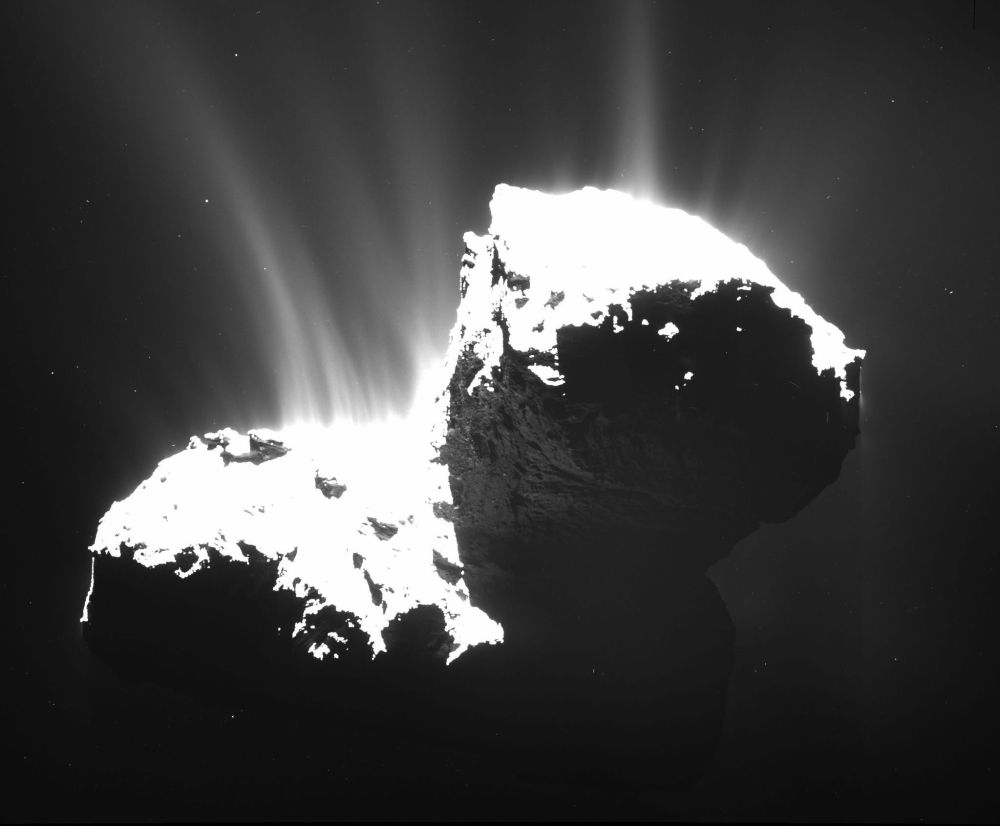The early Rosetta results are in, and they reveal that comets are much more complicated than anyone knew.
In a flurry of seven papers published Thursday in the journal Science, researchers provide the first data-driven snapshot of comet 67P/Churyumov-Gerasimenko – a world of towering cliffs, wide flat basins, powdery surfaces blacker than coal, and a growing atmosphere that will soon be strong enough to deflect the solar wind.
A handful of other spacecraft have flown past comets, but Rosetta is the first one to travel alongside a comet as it makes its way to perihelion in August – the moment when it will be closest to the sun.
Most of the data referenced in the Science studies were collected between April and September, when Rosetta was still sailing toward the comet, and months before Philae’s nail-biting landing on its surface.
“What these papers are talking about is a place where we don’t have a lot of previous observations of comets,” said Paul Weissman of the Jet Propulsion Laboratory and an interdisciplinary scientist on the mission. “We are exploring unknown territory.”
Each of the Science papers describes a different aspect of the comet, including observations of the size and density of the dust in its coma, the composition of the organic material on its surface, where the gas jets seem to spring from its nucleus, and its mesmerizing geology.
So far, scientists have found no evidence of water on the comet’s surface, suggesting that the comet’s remaining water is insulated from the sun’s warmth by the comet’s dusty coat.
Another paper notes that jets of gas streaming off the comet are coming primarily from the neck region.
Researchers have also identified 19 distinct geographical areas that have been named for Egyptian deities such as Ma’at, Imhotep, Aten and Ash.
At two locations, scientists found terrains covered in up to 3 to 15 feet of dust.
In another region, they found fractures in the comet’s surface and circular depressions with steep walls.
In still another region, on the head of the nucleus, there is a large shallow, circular depression more than half a mile in diameter.
Scattered around the nucleus, the scientists observed a system of what they call pits – quasi-circular depressions that are 150 to 1,000 feet in diameter and 30 to 700 feet in depth.
There is evidence that there are some gas jets rising up from these pits.
On the steep slopes of the nucleus, they spotted small bumps 9 feet in diameter that have been given the colloquial name “goosebumps.”
Weissman said these similar sized boulders may be the building blocks of the comet.
Send questions/comments to the editors.



Success. Please wait for the page to reload. If the page does not reload within 5 seconds, please refresh the page.
Enter your email and password to access comments.
Hi, to comment on stories you must . This profile is in addition to your subscription and website login.
Already have a commenting profile? .
Invalid username/password.
Please check your email to confirm and complete your registration.
Only subscribers are eligible to post comments. Please subscribe or login first for digital access. Here’s why.
Use the form below to reset your password. When you've submitted your account email, we will send an email with a reset code.